Come join us now, and enjoy playing your beloved music and browse through great scores of every level and styles!
Can’t find the songbook you’re looking for? Please, email us at: sheetmusiclibrarypdf@gmail.com We’d like to help you!
Table of Contents
How was Bill Evans’ sound in the 60s?
The jazz world was in its own spiral of radicalism by 1968. Tearing down established forms was fashionable in the inner councils of the music’s avant-garde, even as old-timers such as Duke Ellington, Count Basie, Benny Goodman, Ella Fitzgerald, Dizzy Gillespie, Dave Brubeck and even Louis Armstrong continued to anchor the major festivals and draw large mainstream crowds. Pharoah Sanders, Archie Shepp and Albert Ayler were seen by some as reflections of the larger rise of societal frustration and radicalism among African Americans. On another flank, fusion and jazz-rock were bridge-building to a more lucrative segment of the pop market. To some critics, it was a bridge to nowhere; to others, the next important wave.
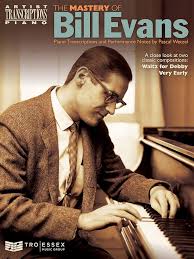
Best Sheet Music download from our Library.
Like the rest of the nation, jazz was alive with anger and argument and living dangerously. Dangerous times are easy to romanticize when the dangers have all passed. It’s the people who keep their heads in the chaos who are often easy to overlook. Such a case can be made for Bill Evans. The pianist had come to wide attention in a more temperate period when the tranquility of the ’50s still prevailed, first on Miles Davis’ Kind Of Blue (which displayed his compositional skills via “Blue In Green” and “Flamenco Sketches”) and on his own 1960 trio album for Riverside, Portrait In Jazz. The trio was a uniquely balanced partnership between Evans, bassist Scott LaFaro and drummer Paul Motian. Evans turned the keyboard into a chamber orchestra of subtle pastels. His spidery body seemed to droop deep over the keys like a weeping willow, his head cocked to one side as if waiting for them to reveal some intimate secret. His first DownBeat cover came in December 1960.
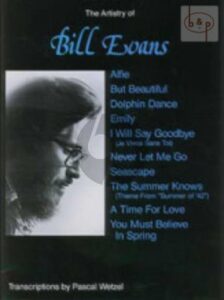
Please, subscribe to our Library.
If you are already a subscriber, please, check our NEW SCORES’ page every month for new sheet music. THANK YOU!
Eight years later, in a noisy world of agitation and the street theater of insurrection, Evans was killing them softly with his songs, presiding in a wistful nimbus of civility and seduction and quietly probing the overlooked corners of the Great American Songbook. The contrast was even more striking because he spent so much of his time in that great womb of Bohemian discontent— Greenwich Village. The trio became a pillar of the Village, first at the Village Vanguard on Seventh Avenue; and then at Art D’Lugoff’s Top of the Gate, a moderately upscale restaurant-and-bar retreat over D’Lugoff’s more famous basement-level Village Gate at 158 W. Bleecker Street.
When Evans debuted in the room on Oct. 15, 1968, launching a four-week stand, he and bassist Eddie Gomez were joined by new drummer Marty Morell. It would initiate the longest-running trio of Evans’ career. For the next six years it often moved between the Vanguard and the Top of the Gate, sometimes clocking 30 weeks a year between the two rooms. “There was no rhyme or reason,” Gomez says of the gig schedules. “One did not preclude playing the other.” The week Evans opened at the Gate, his picture appeared on DownBeat’s cover for the fifth time. The economics of the New York club scene were modest then by today’s standards.
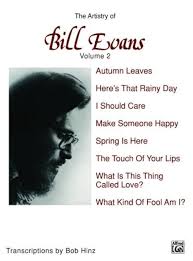


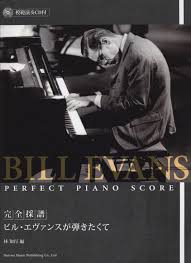
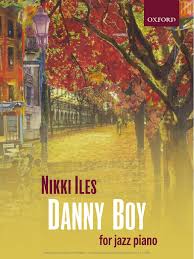
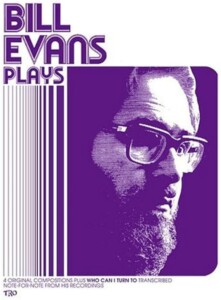
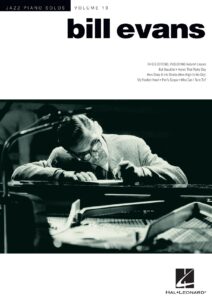




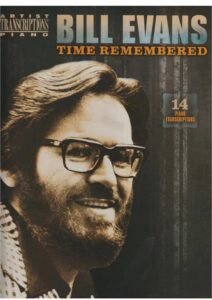
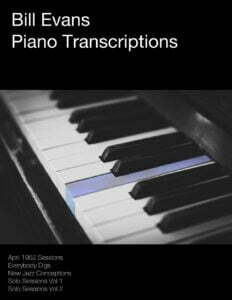
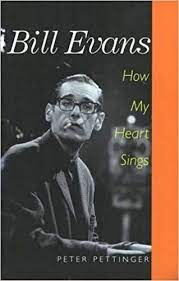
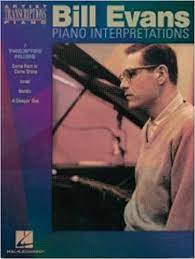
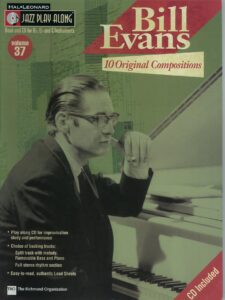
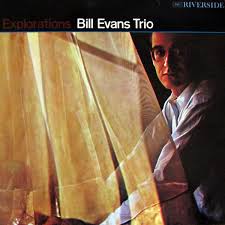
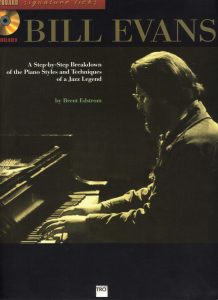
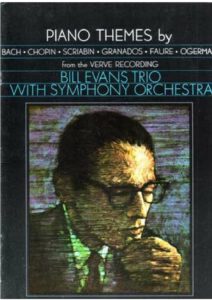
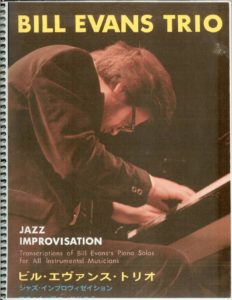
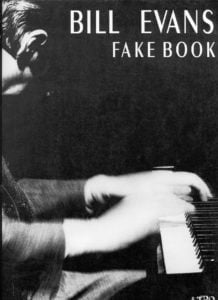
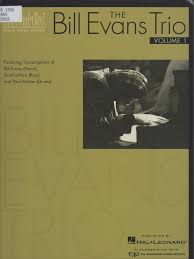
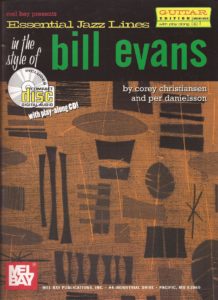
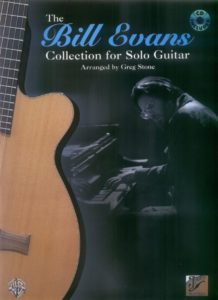
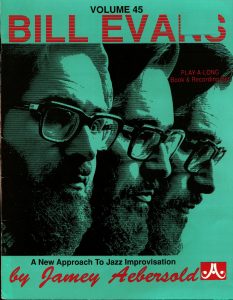
The Top of the Gate charged no cover or minimum. That October, the trio received $1,000 a week. Out of that, Evans paid Morell $175 a week and Gomez a bit more. Manager Helen Keane presumably received a percentage, leaving Evans a net of around $400 a week. But it was surprisingly sufficient, Gomez recalls. “We were always working.” Evans’ sense of tradition, even in 1968, seemed a throwback to an earlier era in jazz. Without irony or postmodern snark, he relied on the built-in restraints of the old-fashioned 32-bar song as completely as others were so eager to abandon them. Perhaps those restraints were more “experimental” to him than the feral, doyour- own-thing world of “freedom” that increasingly surrounded him. In part this is because the tunes were so familiar.
Browse in the Library:
Or browse in the categories menus & download the Library Catalog PDF:
He had to reach higher and search harder to find their fresh fruit. It was a search he seemed to enjoy. “That’s exactly what Bill would have said,” Gomez speculates. “When you repeat repertoire, therein is the challenge—to dig deeper and find new things. And Bill was always about that. He could be lyrical but also pointillistic. He liked some atonal approaches, too: [‘Twelve Tone Tune’] was serially composed but with traditional harmony. Furthermore, he was definitely a contemporary musician, but he chose for the most part to explore what was right in front of him.” The intimacy and intelligence of Evans’ music at this particular moment, 44 years back can be heard with remarkable presence on a new two-CD collection, Live At Art D’Lugoff’s Top Of The Gate, from Resonance Records, part of the non-profit Rising Jazz Stars Foundation that George Klabin founded in 2005. (Resonance Records is also offering audiophiles a numbered, limited-edition box set of three 12-inch vinyl discs recorded at 45 rpm.)
It’s the latest in a pair of important Evans discoveries to come along recently, the first of which, Bill Evans: The Sesjun Radio Shows (Out of the Blue), arrived about a year ago and offered three ’70s performances from the Netherlands. Both belong to that category of release that often is accompanied by such phrases as “the lost sessions of …” or “newly discovered”—descriptions intended to incite a collector’s sense of recovered history. Often the price of such history is poor sound. But not so here. Both the Sesjun and Gate performances shed important new light on Evans and were recorded with uncommon care, the latter by Klabin himself, who says his tapes were neither lost nor rediscovered, merely held in safe keeping to ripen. Klabin came to Columbia University as a freshman in 1964 and a year later began programming jazz at the college’s radio station, WKCR. (When he left in 1969, he was succeeded by Phil Schaap, a noted jazz historian and impresario who continues to be heard on the station.)
“Because KCR was non-profit,” Klabin says, “I could record musicians and play the tapes on the station. They’d get a free recording out of it, and I’d get them on the air. After a while, musicians would invite me to record on location.” In this, Klabin was following in the footsteps of Jerry Newman, who had come to Columbia as a student in 1941 just as WKCR was going on the air. Newman took his recording equipment to Minton’s Playhouse, recorded the first formulations of bebop—with Thelonious Monk and Charlie Christian—and played them on WKCR, just as Klabin would do a generation later. Newman became something of a model for Klabin, who began his own odyssey of location recording for WKCR in 1965. The contact with Evans began with a radio interview he recorded around 1966. “I remember George as very eager and ambitious,” Gomez recalls. But as graduation approached in June 1968, Mark Rudd led a student strike that occupied the office of university president Grayson Kirk. “I stayed away from that,” Klabin says, but notes that all final exams were suspended that spring. “How many students graduate without finals?” Having graduated, he remained with the radio station another year, long enough to make the Evans tapes at the Top of the Gate. By then he was acquainted with Keane, Evans’ manager and producer since 1963. “She called me or I called her,” says Klabin. “I knew that Bill was breaking in a new trio at the Top of the Gate, and she asked if I’d like to record it—or I asked. Anyway, she gave me full permission, and I recorded two sets.” Klabin had by now become a fairly accomplished engineer.
He used two-track recorder, four mics and a single stereo mixer. It all happened without any sense of occasion. There was no sound check, no time to set a balance. Any adjustments were made “on the fly.” Large enough for 150 to 200 people and sometimes a bit noisy, the room remained an intimate setting for a trio. Nevertheless, Klabin wanted to avoid too much ambiance. So he placed his microphones close to the instruments. The result is a recording full of detail but with enough room sound to suggest a physical environment.
While the trio created a refuge of order upstairs—spinning graceful webs from the melodies of Richard Rodgers and Jerome Kern— outside on Bleecker Street, fashionable hippies and would-be Weathermen mingled with curious tourists out to experience “the Sixties.” What may be most interesting about Evans at this highwater moment of Cultural Revolution is that he was quietly becoming a major force in contemporary music using essentially counter-revolutionary materials. To listen to the serene proceedings in the Top of the Gate today, one can’t help noting how remote from the barricades he intended to make himself.
“Bill was not one to get into politics through his music,” Morell says. “He stood apart in a lot of ways. It insulated him from a lot of the excess of the time. Bombs could be going off, and he was still going to play ‘My Foolish Heart’ with warmth and love.” “In that climate there was a lot of music trying to break through in different directions,” Gomez says, “which only shows that you can do a lot of good things with old tools.” Evans had a considerable catalog of his own songs by now and “Waltz For Debby” was becoming a jazz standard. But the two sets that night included only one Evans tune, “Turn Out The Stars.”
Maybe it was because this was a new trio still in a break-in period. Morell was in his second week with the group. So, how did he fit into the deeply established relationships of a trio? “I’d listened to Bill for years,” says Morell. “I knew what he was doing, so I felt equipped from the start. I knew his book. You familiarize yourself with the details at the moment. At that level, you either play right or you don’t. It’s never a question of discussing music details. We never rehearsed. He never suggested any changes in my playing. You either felt it or he’d find someone else.
By the time he heard me, I had listened to the group for so long that in my mind, I had been there. The first night at the Top of the Gate, after we finished, Bill said, ‘Wow, you sound like you’ve been playing with us for years.’ I said I had.” Gomez remembers that his own induction into the trio two years earlier in Chicago had come with a degree of uncertainty. “I was fraught with tension, to say the least,” he explains, “because the job was not mine to have yet. It had been a dream of mine to play with Bill when he asked me to do a short tour as a kind of audition. That first week was harrowing. Bass plays both a rhythmic and harmonic role, of course, and solos as much as Bill. There was a lot for me to do at a high level, and I was not on such sure ground because I had so much to learn. I was hoping Bill would be patient with me, and he was.” One of the closely guarded secrets in jazz involves the element of spontaneity.
Yes, the license to improvise is genuine. But even in a trio, it typically takes place within a careful design that is thought through before the first audience hears a note. Part of the jazz art is the art of illusion, a deception intended to keep those designs out of sight and invite listeners to believe it’s all materializing for the first time.
“A good metaphor might be a play,” says Gomez. “Jazz is a kind of theater. You have to come at it prepared with certain pre-planned structures, then let things develop within those real-time moments. The expositions and recapitulations were the same. It was always about the development in the middle, not unlike a sonata allegro.” The clocklike precision of the trio’s inner machinery is evident on the Top Of The Gate sets. Consider the two versions of “Emily” and “’Round Midnight.” Each proceeds through a nearly identical series of cues and supporting ideas. Each finishes within a second or two of its mate. They are like signatures, unmistakably alike but never the same. “Bill had everything organized,” Morell says. “We had arrangements on every tune with a format for an introduction and solo order. He would never wing it. He would choose his material carefully and find a way to perform a composition before he would present it. He thought these things out very carefully before he would include a tune in a set. But if you listen carefully, there’s nothing that’s routine.”
The Bill Evans Trio had a fourth member: silent partner, manager and producer Helen Keane. Whatever label Evans recorded for after 1963, Keane’s name appeared as producer. She was intimately involved in his work. “She was present the night I recorded,” Klabin says. “I loved Helen. She was fair and tough and wouldn’t let people take advantage of him. Always had his best interests at heart.” This view is shared by Evans’ biographer, Peter Pettinger, critic Gene Lees and others close to the pianist. “She was Bill’s guiding angel,” Gomez says. “The world doesn’t always recognize his kind of artistry. She helped see to it that it did by being a bridge to record companies and clubs. She would suggest projects and concepts they could use.” But there were also quiet tensions between Evans and Keane.
“There were a couple of projects she pressed that were not in Bill’s comfort zone,” says Gomez. Morell is more specific, nodding to the 1972 LP Living Time with the George Russell Orchestra. “She always tried to get herself involved musically,” Morell says. “And sometimes it was a problem. I know at times he disagreed with her approach, but he always gave her the courtesy of doing her job as she saw fit.” It had been quite a coup when the trio signed with Columbia in 1971, and Evans’ first LP, The Bill Evans Album, won two Grammys. So Keane convinced Columbia that Evans deserved a bigger budget next time. She got $25,000. “Helen had always wanted to do some big, earth-shattering project,” Morell says. “So it turned out to be with Living Time.
When Helen commissioned Russell to write some large ensemble thing for the trio, George brought in this music he had already composed and wanted to record. He just stuck the trio in somewhere. I said, ‘What the hell is going on? The trio is getting eaten up.’ The record was a huge flop, not what Bill’s people wanted to hear. Columbia dropped him. “Basically, Bill just wanted to show up and play, and he needed someone like Helen to manage the things he didn’t want to manage. When she would start managing the music, sometimes he knew it was wrong, but he would just kind of go along with it because she had done well by him before. Bill was very apathetic, and Helen was very strong. She did a lot of good things. So you’ve got to go with the averages, and there was more good than bad.” Gomez agrees.
“Ultimately, I think she did incredible things for Bill,” he says, “and I think he was very much aware of it.” After Klabin taped the trio at the Top of the Gate in 1968, he made copies for Evans, played them once on his radio show and put them away. Nearly 40 years later, he started the Rising Jazz Stars Foundation. In 2009, he hired Zev Feldman to help run Resonance Records. One day Klabin happened to mention that he had recorded the Evans trio when he was at Columbia University. “What?” Feldman gasped. “Bill Evans!” Born six years after the tapes were made, Feldman saw them as treasured artifacts from a golden age he had missed. He became the main advocate for putting them out. “George had never wanted to get involved in securing the necessary clearances to do it properly,” Feldman says. “So I said I could help.” He began with the Universal Music Group and Verve Records, which held Evans’ recording contract at the time. (Evans had just completed a solo album, Alone, two days before Klabin taped at the Gate.) “They were real mensches,” Feldman says, “and cooperated fully.” He went on to contact Evan Evans, Bill’s son; then Gomez and Morell, and even Art D’Lugoff’s surviving family. “I’m happy we were able to get everyone on board,” he says.
“Everyone was treated fairly.” Today, the old Top of the Gate is a CVS drug store. D’Lugoff died in 2009 at age 85. Gomez, 67, lives a few blocks north of the old Gate, continues to work in a variety of settings and adds new work to his large discography. The latest is Per Sempre on BFM Jazz. Morell, 68, teaches at the University of Central Florida, emphasizing to his students the need for versatility. Evans died in 1980 at 51, but he continues to cast a huge influence over musicians and scholars. A 20-year-old jazz studies major at Northwestern University recently received a research grant to transcribe a body of Evans’ work. For the Oct. 17, 1968, issue of DownBeat, Evans provided a handwritten transcription of his composition “Very Early.” It was accompanied by a brief interview in which Marian McPartland asked the pianist to share his advice for young players.
Bill Evans said, “If you play too many things at one time, your whole approach will be vague. You won’t know what to leave in and what to take out. I would say to a young musician: Know very clearly what you’re doing and why—play much less, but be very clear about it. It’s much better to spend 30 hours on one tune than to play 30 tunes in one hour.” Evans’s performance on Top Of The Gate certainly reflects his “digging deeper” approach. However well Resonance Records does with this new release, the ultimate profit will be to the Bill Evans legacy. And it will be considerable.
Search your favorite sheet music in the category of Jazz, Blues, Soul, & Gospel.
Bill Evans – Turn Out The Stars
Bill Evans – The Birdland Sessions (1960 Album)
Track List:
01 Autumn Leaves 4:56. 02 Our Delight 6:38. 03 Beautiful Love/Five 5:24. MARCH 19,1960. 04 Autumn Leaves 6:48. 05 Come Rain Or Come Shine/Five 5:08. ABRIL 30, 1960. 06 Come Rain Or Come Shine 4:55. 07 Nardis 7:26. 08 Blue In Green 6:14. 09 Autumn Leaves 7:09. MARCH 12, 1960. 10 All Of You 6:58. 11 Come Rain Or Come Shine 4:38. 12 Speak Low 6:48.
